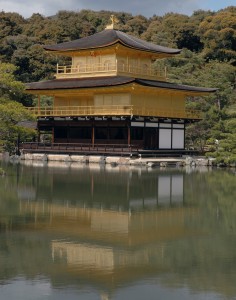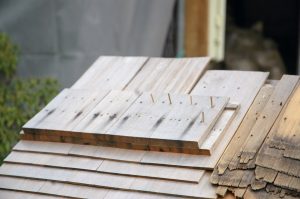We may receive a commission when you use our affiliate links. However, this does not impact our recommendations.

Kyoto’s Kinkakuji serves as slightly unlikely inspiration for the effort to adapt tansu construction techniques.
Kyoto’s Kinkakuji sits on the edge of an ornamental pond, its gold leaf catching the light and turning it to an aureate glow, the whole gleaming apparition reflected in the pond. And yet when I visited Kinkakuji, I was almost as taken with a roofing display as I was with the newly gold-leafed temple, for the roof itself is a marvel as the display showed. 40 layers of wooden shingles were applied to roof, each held in place by bamboo nails.
I remembered those nails when I decided to build a tool chest adapting the techniques used to build tansu. When we think of tansu, it is the kaidandansu, or step chest, that often comes to mind. But tansu includes an array of case pieces designed for different duties, from storing books, to clothing, to tea utensils. My own modest effort in the style would owe more to these utilitarian chests than to kaidandansu. The cases of smaller tansu are often pinned finger joints, and it’s those pins that brought to mind the bamboo nails used to anchor the cedar shingles of Kinkakuji’s roof. I didn’t have a ready supply of bamboo nails, but I had the next best thing—bamboo barbecue skewers.
To pin joints using these skewers, I found a drill bit slightly smaller than the diameter of my skewers and used it to drill my pinholes. I then applied a bit of glue to a short length of skewer and tapped it home. After the glue dried, I cut the pin flush. I’m not going to replace a roof using the technique any time soon, but it did work well for my smaller project.
Look for information on Japanese tools or joinery techniques, and you’ll find something on joinery techniques, tool use, and building shoji, but there’s very little out there on Japanese furniture forms. My next webinar for Popular Woodworking University will attempt to fill that gap. We’ll look at the many different kinds of tansu and the construction techniques used to build them, and then we’ll take a look at how we can adopt these techniques to our own projects.
Here are some supplies and tools we find essential in our everyday work around the shop. We may receive a commission from sales referred by our links; however, we have carefully selected these products for their usefulness and quality.









